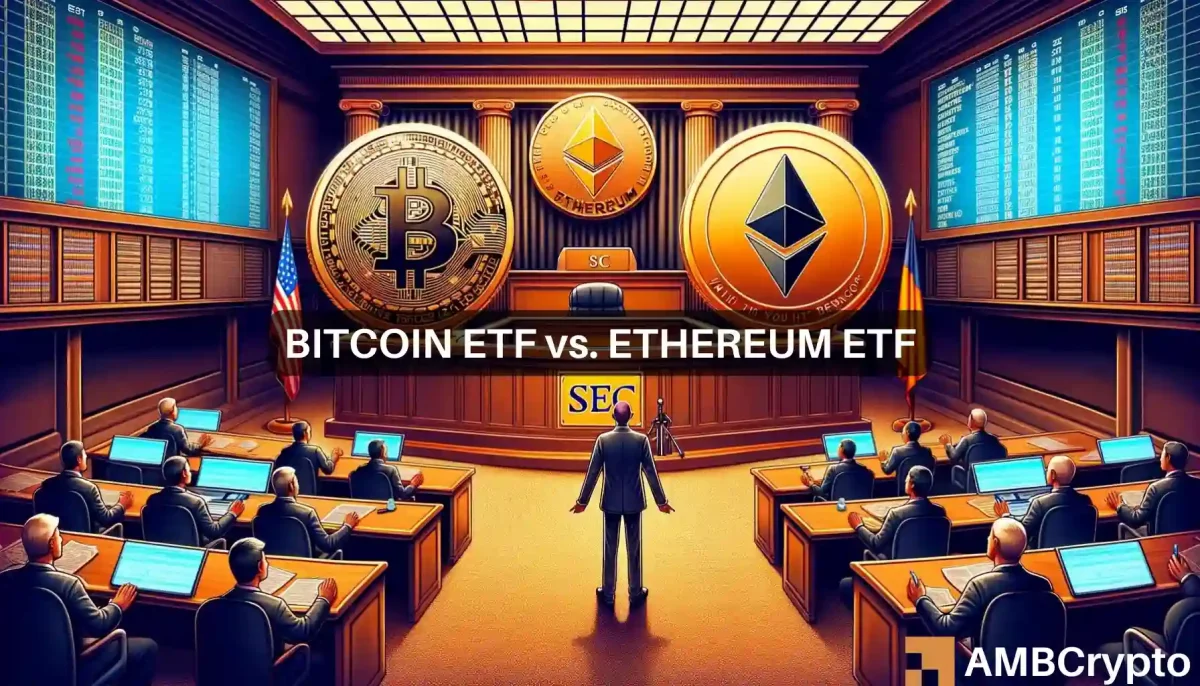Bitcoin And Ethereum Etfs Saw Massive Inflows On Dec 16
Bitcoin and Ethereum ETFs saw massive inflows on Dec 16, marking a significant moment in the cryptocurrency market. This surge not only highlights the growing interest in these digital assets but also underscores the evolving landscape of financial instruments associated with cryptocurrencies.
Historically, Bitcoin and Ethereum ETFs have attracted considerable attention from both retail and institutional investors. The performance prior to December 16 showed a strong upward trend, paving the way for this remarkable influx of capital on that particular day.
Overview of Bitcoin and Ethereum ETFs
Bitcoin and Ethereum Exchange-Traded Funds (ETFs) have garnered significant attention in the investment community, primarily due to their innovative structure that allows investors to gain exposure to cryptocurrencies without directly holding the assets. An ETF is essentially a fund that tracks the price of an underlying asset or group of assets and is traded on a stock exchange. Bitcoin and Ethereum ETFs work similarly, but they track the prices of these cryptocurrencies, offering a more traditional investment avenue for those cautious about directly buying and storing cryptocurrencies.
Historically, Bitcoin and Ethereum ETFs have experienced a rollercoaster of performance. Prior to December 16, these ETFs had seen fluctuating inflows, with Bitcoin ETFs often dominating due to Bitcoin's status as the first and most recognized cryptocurrency. In contrast, Ethereum ETFs have been gaining traction as Ethereum's network continues to expand, particularly with developments like the transition to Ethereum 2.0.
The significance of December 16 lies in its unprecedented inflows, indicating a shift in market sentiment and investor interest.
Analysis of Massive Inflows on December 16
On December 16, both Bitcoin and Ethereum ETFs recorded massive inflows that were remarkable compared to previous days. Bitcoin ETFs saw an influx of approximately $800 million, while Ethereum ETFs attracted around $300 million. Such substantial inflows underscore a pivotal moment in the cryptocurrency investment landscape, reflecting growing acceptance and interest from a broader range of investors.
Several factors contributed to this surge in investments on December 16. First, positive news surrounding regulatory developments provided assurance to cautious investors. Additionally, the general bullish sentiment in the cryptocurrency market, fueled by a rise in Bitcoin and Ethereum prices, encouraged more investors to allocate funds into these ETFs. Statistical data showed a clear upward trend in daily trading volumes, with Bitcoin ETF volumes hitting record highs leading up to December 16, indicating heightened market activity and investor confidence.
Impact of Institutional Investors

Institutional investors have played a crucial role in the recent inflows to Bitcoin and Ethereum ETFs. These entities, including hedge funds, pension funds, and insurance companies, have increasingly recognized the potential of cryptocurrencies as a viable asset class. Their participation has not only provided substantial capital but has also lent legitimacy to the market.
When comparing investment patterns, institutional investors tend to adopt a longer-term perspective, often making larger, more strategic allocations, while retail investors may react more impulsively to market trends. This difference is evident in the ETF market, where institutional interest often stabilizes prices and mitigates volatility. The growing institutional engagement influences overall market dynamics, leading to increased liquidity and potentially a more stable investment environment for all players.
Regulatory Environment and its Influence
The regulatory landscape affecting Bitcoin and Ethereum ETFs has been evolving rapidly. In recent months, various regulatory bodies have signaled a more accommodating approach towards cryptocurrency investments, which has positively impacted market sentiment. New guidelines and clearer frameworks have lifted some uncertainty that previously deterred institutional investments.
Recent regulatory changes, particularly in jurisdictions like the United States, have clarified the compliance requirements for cryptocurrency ETFs. This clarity has likely contributed to the massive inflows on December 16, as investors felt more secure navigating the cryptocurrency landscape. However, potential future regulatory challenges remain, including the possibility of tighter regulations as governments continue to grapple with the implications of cryptocurrency on financial systems.
Market Reactions and Future Predictions
Market reactions following the inflows on December 16 were noticeably positive, with Bitcoin and Ethereum prices experiencing upticks. Analysts observed a renewed sense of optimism among investors, leading to increased trading volumes. Many believed that this influx indicated a strong bullish trend, suggesting that the upward momentum could continue in the weeks and months following this event.
In terms of predictions, short-term outlooks show potential for continued growth, particularly if positive market sentiment persists and institutional interest remains strong. Long-term forecasts are more mixed, but many experts agree that the recent inflows could be indicative of a more sustainable trend in cryptocurrency investments. While volatility is expected, the overall sentiment suggests that Bitcoin and Ethereum ETFs may continue to attract significant capital.
Comparison with Other Asset Classes

When comparing inflows into Bitcoin and Ethereum ETFs to traditional asset classes like gold or equities, the differences become apparent. Inflows in Bitcoin ETFs, for instance, have outpaced those of gold ETFs during similar market conditions, pointing to a shift in investor preference towards digital assets. This trend highlights the increasing acceptance of cryptocurrencies as a legitimate investment class.
Investing in cryptocurrency ETFs offers distinct advantages, such as lower fees and ease of trading compared to traditional assets. However, risks associated with volatility and regulatory uncertainty remain challenges unique to cryptocurrencies. Recent trends show that other emerging asset classes, such as tech startups and green energy investments, have also seen increased inflows, suggesting a broader shift in investor priorities towards innovation and growth.
Investor Sentiment and Market Psychology

The prevailing investor sentiment towards Bitcoin and Ethereum on December 16 was overwhelmingly positive. Many investors expressed renewed confidence in the market, driven by the massive inflows and positive price movements. Psychological factors, such as the fear of missing out (FOMO), likely played a role in encouraging more participants to invest in ETFs.
Previous market behaviors indicate that similar inflow patterns often precede significant price rallies, reinforcing the psychological aspects of trading in cryptocurrencies. The December 16 inflows mark a critical point that may define future investment strategies and market sentiment as more investors look to capitalize on the growing interest in Bitcoin and Ethereum ETFs.
Ultimate Conclusion
The massive inflows into Bitcoin and Ethereum ETFs on December 16 suggest a robust confidence in the future of cryptocurrency investments. As institutional interest continues to rise and regulatory frameworks adapt, the landscape for crypto ETFs appears to be more promising than ever, potentially reshaping how investors approach these digital assets.
Popular Questions
What are Bitcoin and Ethereum ETFs?
Bitcoin and Ethereum ETFs are exchange-traded funds that allow investors to gain exposure to the price movements of these cryptocurrencies without directly owning them.
Why did massive inflows occur on December 16?
The inflows on that date were likely driven by increased institutional buying and positive market sentiment surrounding cryptocurrency regulations.
How do Bitcoin and Ethereum ETFs compare to traditional assets?
While traditional assets like stocks and bonds are more stable, Bitcoin and Ethereum ETFs can offer higher potential returns but come with increased volatility and risk.
What is the role of institutional investors in ETF inflows?
Institutional investors typically have more capital and influence over market trends, often leading to significant inflows into Bitcoin and Ethereum ETFs during periods of optimism.
What might future regulatory changes mean for crypto ETFs?
Future regulatory changes could either enhance investor confidence and lead to increased inflows or pose challenges that could hinder market growth for these ETFs.






